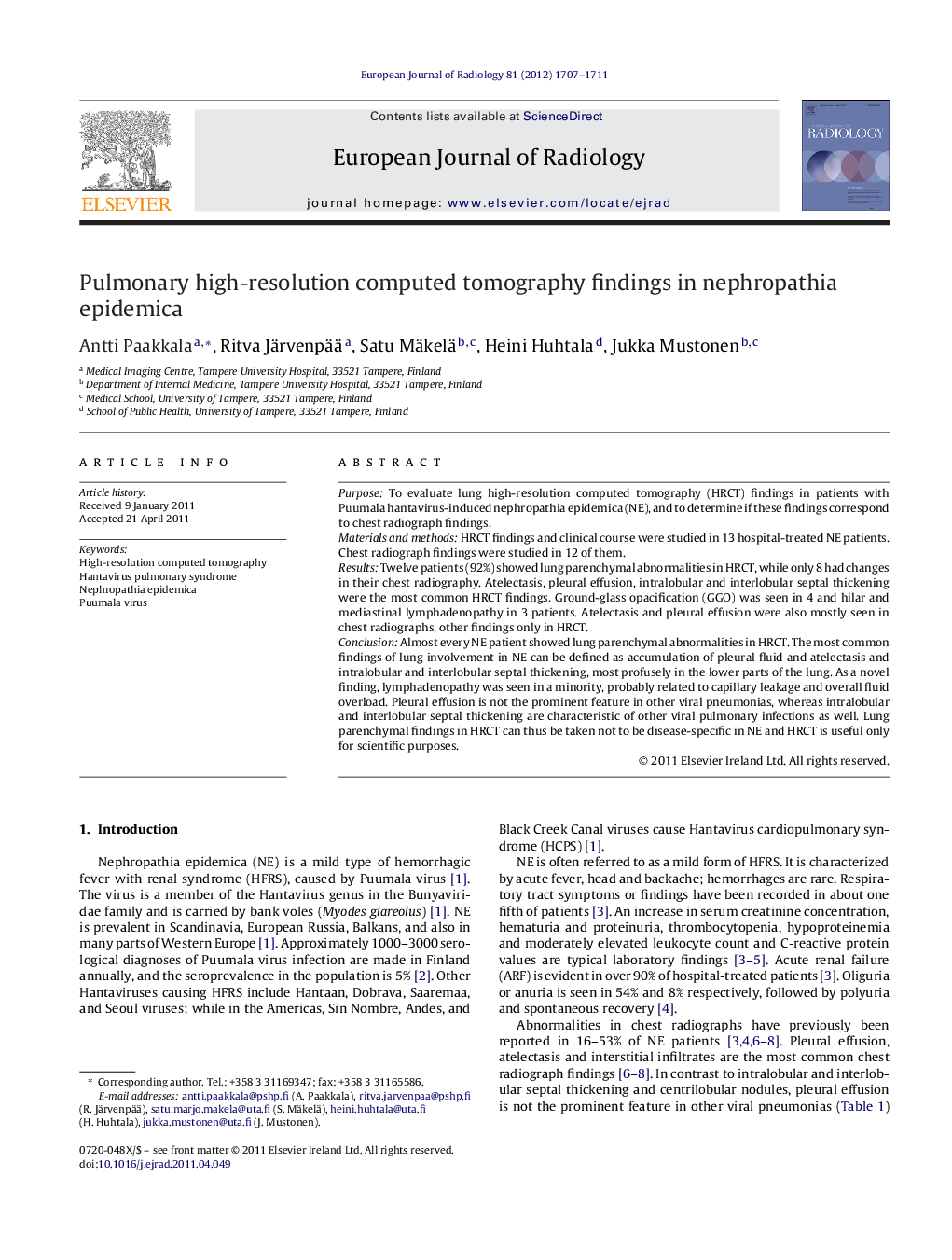| Article ID | Journal | Published Year | Pages | File Type |
|---|---|---|---|---|
| 4226089 | European Journal of Radiology | 2012 | 5 Pages |
PurposeTo evaluate lung high-resolution computed tomography (HRCT) findings in patients with Puumala hantavirus-induced nephropathia epidemica (NE), and to determine if these findings correspond to chest radiograph findings.Materials and methodsHRCT findings and clinical course were studied in 13 hospital-treated NE patients. Chest radiograph findings were studied in 12 of them.ResultsTwelve patients (92%) showed lung parenchymal abnormalities in HRCT, while only 8 had changes in their chest radiography. Atelectasis, pleural effusion, intralobular and interlobular septal thickening were the most common HRCT findings. Ground-glass opacification (GGO) was seen in 4 and hilar and mediastinal lymphadenopathy in 3 patients. Atelectasis and pleural effusion were also mostly seen in chest radiographs, other findings only in HRCT.ConclusionAlmost every NE patient showed lung parenchymal abnormalities in HRCT. The most common findings of lung involvement in NE can be defined as accumulation of pleural fluid and atelectasis and intralobular and interlobular septal thickening, most profusely in the lower parts of the lung. As a novel finding, lymphadenopathy was seen in a minority, probably related to capillary leakage and overall fluid overload. Pleural effusion is not the prominent feature in other viral pneumonias, whereas intralobular and interlobular septal thickening are characteristic of other viral pulmonary infections as well. Lung parenchymal findings in HRCT can thus be taken not to be disease-specific in NE and HRCT is useful only for scientific purposes.
